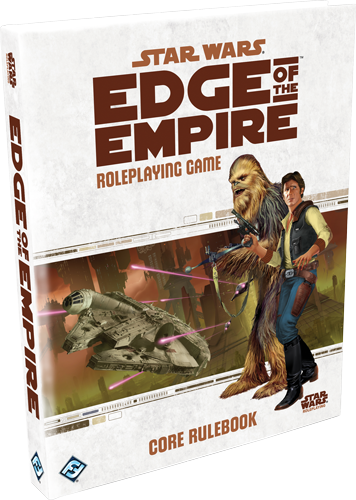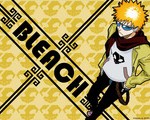 I have been a long time player of pen and paper role playing games. Abbreviated as “RPG”, the number of unique games and systems have grown over the years since the original Dungeons & Dragons launched the genre with the hallowed white box three book set in 1974. They have creeped into every imaginable popular milieu; post-apocalyptic (Gamma World), American west (Boot Hill), espionage (Top Secret), super-hero (Villains and Vigilantes), and far future sci-fi (Traveller). They have been published under every imaginable license including Star Trek, Lord of the Rings, Starship Troopers, Conan, and even the obscure such as The Terran Trade Authority.
I have been a long time player of pen and paper role playing games. Abbreviated as “RPG”, the number of unique games and systems have grown over the years since the original Dungeons & Dragons launched the genre with the hallowed white box three book set in 1974. They have creeped into every imaginable popular milieu; post-apocalyptic (Gamma World), American west (Boot Hill), espionage (Top Secret), super-hero (Villains and Vigilantes), and far future sci-fi (Traveller). They have been published under every imaginable license including Star Trek, Lord of the Rings, Starship Troopers, Conan, and even the obscure such as The Terran Trade Authority.
As some of you know, one license that is near and dear to my heart is Star Wars. There have been a few examples of Star Wars licensed RPGs through the years including the original West End Games (WEG) Star Wars D6 system, Wizard of the Coast’s first attempt with Star Wars D20 (Original and Revised) and a second go at it with the Star Wars Saga Edition. I own and have played the D20 and Saga editions, so when I heard Fantasy Flight had taken over the Star Wars hobby game license from Wizards of the Coast in August of 2011, my interest was to say the least, piqued. I had owned and played some Fantasy Flight titles prior to the announcement, but they had been all board games. I had no experience with any of their RPG products and I was definitely taking a wait and see attitude.
As a huge Star Wars fan, I had plans to be at the Celebration VI convention in Orlando in August of 2012. At that time Fantasy Flight had just published the beta rule set for their first Star Wars RPG book, Star Wars: Edge of the Empire (EoE) and had it for sale at the convention. Once on the vendor floor I made a beeline for the impressive Fantasy Flight booth and picked up a copy. (I was in line behind an Italian Sandtrooper who was intent on purchasing a complete set of X-Wing minis and tried his best mind-tricks to get at the prototype Millennium Falcon in the display case. Only at a Star Wars Celebration!)
 I was pretty pleased with what I read on the new game. I loved the new dice and the challenge resolution system with the building of a dice pool. The addition of positive and negative dice depending on the conditions of the challenge and the circumstances prevailing is a great way to simulate events in the Star Wars universe. The Force dice with light and dark side symmetry really had me hoping that one of the weaknesses I felt about the Saga system would be resolved in EoE, the unbalanced Force system. Another area that looked good was the talent tree diagrams.The old Saga talent system which governed the special abilities and powers for the various character classes, started off fine when the game was simple and only the core book was in print, but as the supplements began to flow the talent trees became unwieldy and difficult to play. The manner in which the rule books were laid out made it difficult to get an idea of what talent depended on what force power or other talent as a pre-requisite. I always wanted an online reference to the complete talent tree for every class but online support for the game was severely lacking. I ended up making my own excel spreadsheet to help arbitrate the progression of talents and figure out the interconnectivity of powers and skills.
I was pretty pleased with what I read on the new game. I loved the new dice and the challenge resolution system with the building of a dice pool. The addition of positive and negative dice depending on the conditions of the challenge and the circumstances prevailing is a great way to simulate events in the Star Wars universe. The Force dice with light and dark side symmetry really had me hoping that one of the weaknesses I felt about the Saga system would be resolved in EoE, the unbalanced Force system. Another area that looked good was the talent tree diagrams.The old Saga talent system which governed the special abilities and powers for the various character classes, started off fine when the game was simple and only the core book was in print, but as the supplements began to flow the talent trees became unwieldy and difficult to play. The manner in which the rule books were laid out made it difficult to get an idea of what talent depended on what force power or other talent as a pre-requisite. I always wanted an online reference to the complete talent tree for every class but online support for the game was severely lacking. I ended up making my own excel spreadsheet to help arbitrate the progression of talents and figure out the interconnectivity of powers and skills.
In EoE the talents are diagramed to show dependency and related prerequisite talents. Think of a computer programming flowchart. This seems to be a great improvement over the Saga system’s text block approach in my opinion. It remains to be seen as the Fantasy Flight Star Wars RPG grows, whether the designers can keep the ease of use for talents consistent. I sure hope so.
I’ve touched on this with my description of the dice pool, but one very important thing that the design team on EoE seems to have understood about Star Wars is the yin and yang of the saga, the balance between dark and light. That overarching premise is reflected right down to the central character: Anakin Skywalker and his fallen form, Darth Vader. This balance is reflected in the dice pool and in other areas of the game design. The third installment in the core books for the game is tentatively titled Force and Destiny and scheduled for a 2015 release. If the Fantasy Flight team keeps to the symmetry they have so far installed in the game, the issues with creating balanced Force-users that existed in the Saga edition will be solved.
I am looking forward to the next major release in the core book series, Star Wars: Age of Rebellion of which a beta release will be made available. Another upcoming title that will be of interest in the first full-length adventure written outside of a rule book or box set: Edge of the Empire – Beyond the Rim by Sterling Hershey. By recruiting a veteran of Star Wars RPG development, Fantasy Flight has shown they are serious about the game and its quality. Writing an adventure that captures the feel of Star Wars is a difficult undertaking but with Hershey, who also worked on D6 and Saga material, they have made a strong start.
May the Force be With You and with your gaming!

 Many of you who are classic table-top RPG fans may have heard of Monte Cook’s
Many of you who are classic table-top RPG fans may have heard of Monte Cook’s 